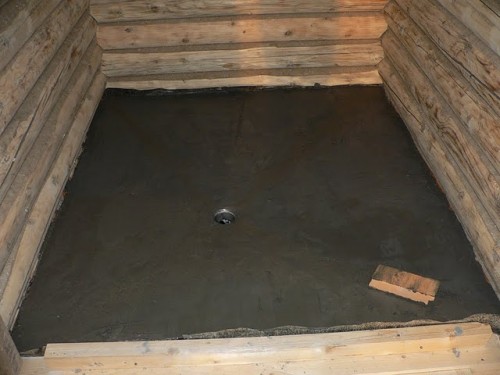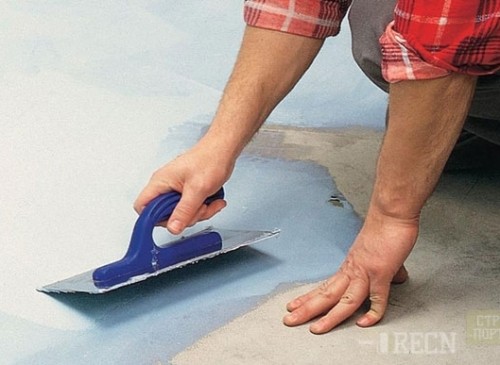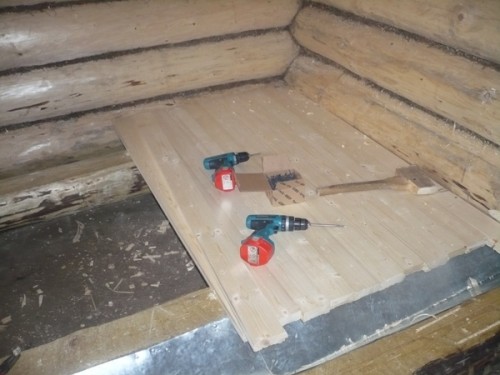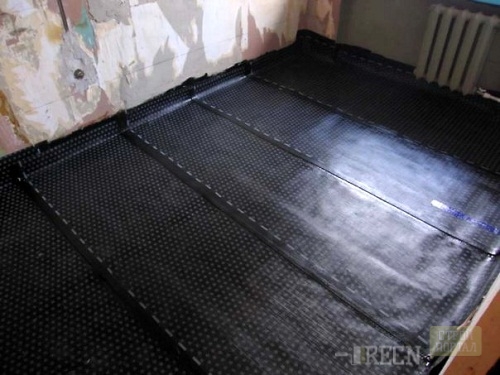
Floor Waterproofing Technology in Ban Baths, saunas and pools
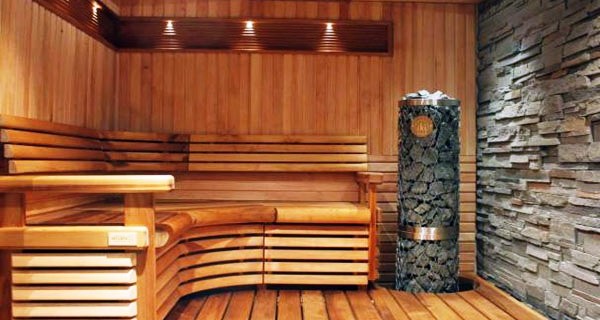
Construction of a bath is a responsible process consisting of several stages. So, if you have already built a box of the building, made the roof and installed the doors, then the queue of indoor arrangement. Waterproofing is an integral part of the construction and pledge of the durability of the entire structure. Bath is a special place with a specific "climate", therefore, the requirements for waterproofing will be much more serious than to ordinary bathrooms. How to make good waterproofing of the floor in the bath with their own hands?
Content
Why do you need waterproofing
Not only the duration of the battery life of the bath, but also the level of comfort during the rest, depends on the quality of the floor-insulation of the floor. If the water is stated on the floor, you are unlikely to like to span on the puddles and look into the wet surface. Good waterproofing guarantees the ease of use of the bath, long service life, comfort and safety during its visit.
To take care of the waterproofing of the floor Bani is still in the initial stages of construction. Depending on the materials from which the floor and the method of its construction will depend on the type of waterproofing. If we think about this question at the drawing stage, you can save not only time, but also money.
So, during the construction of floors, it is necessary to worry about drainage from all rooms of the bath in advance. This will help plant drain for water. The principle of its action is similar to the operation of rain plots on the streets - excess water on the floor is sent to the mounted plum and flows into the sewer.
This simple design will not only save the foundation of the bath from destruction due to excessive humidity, but also prevents the formation of fungus, mold and unpleasant odor. Drain, as a rule, make in the lowest part of the bath. To do this, pour the screed or nail the floor boards with a slight tilt so that water flows without problems in the desired side.
The drain itself is a gutter or pipe from anti-corrosion materials. The only prerequisite is the ability to withstand high temperatures. The upper part of the drain (funnel) should not be metallic, so as not to burn legs. Ideally, the drain should be located in the "disadvantaged" place.
Types of waterproofing
Floor waterproofing in the bathhouses two types: traditional and penetrating. Consider each of them in more detail.
Traditional
Traditional waterproofing in turn is divided into coating and glued. At first, the purified prepared floor is covered with several layers of bitumen mastic, on top of which a suitable waterproofing material is stacked. From above the floor is covered with finishing finish.
Thanks to this simple structure, reliable protection against moisture is ensured, however, the traditional (bituminous) technology of waterproofing the floor in the bath has its significant disadvantages.
Cons of the traditional way:
- the floor level rises by about 5 cm, which is very noticeable at low ceilings in the bath;
- the specific caustic smell of bituminous mastic is difficult to eat and can absorb the walls of the walls and the ceiling.
A glass grooveroid, various polymer films, hydrohotelloisol and other materials that are not susceptible to rotten can be used as the glued waterproofing material.
Penetrating
Penetrating waterproofing of the floor in the bath (photo) is often used precisely for baths, because it does not have the disadvantages of the traditional method.
A special waterproofing solution is applied to the purified primed floor, which reliably protects from moisture after drying.
Types of penetrating waterproofing:
- concrete;
- polymer cement;
- cement inorganic;
- seamless.
Depending on the type, operational indicators will differ. For example, making concreting waterproofing for a small bathhouse is impractical - it is too powerful, dense and frost-resistant. It is better to use it for the construction of pools. But polymer cement compounds that differ in environmental friendliness, excellent adhesion and durability are perfect for the bath. The most popular view is seamless waterproofing. For obvious reasons (due to lack of seams), it can be used for any premises.
Waterproofing wooden floor
All wooden coatings can be divided into leaking and non-pending. The flowing floors are characterized by the presence of slits between the floorboards. Water through them goes to the ground. In non-flowing floors there is a drain or drainage, along which the water is output from the room.
Floor Waterproofing Device in Ban:
- Waterproofing wooden floor in the bath is hand in hand with thermal insulation. Otherwise, the laptile floors will freeze and be covered with ice. So that this does not happen, from the bottom side of the lag strengthen the wooden bars of 50x50 mm. Place the draft floor on top of them.
- On the draft floor to put a pair of a palate of roofing, a polyethylene film or any other waterproofing material.
- On top of the flooring, put the thermal insulation material. It can be mats from mineral wool, glass gambles, etc. The main thing is that the material possesses high fire-resistant characteristics.
- To lay the selected waterproofing material on top of the heat insulation. Recently, EuroBeroid is increasingly used in the baths. However, when buying does not hurt to clarify whether your chosen brand is suitable for use in specific bath conditions. If you are a supporter of savings, you can do the usual bitumen.
- After pouring the waterproofing layer, you can start the flooring. Tree for floors in the bath is better to use coniferous rocks. With proper processing, such wood will last incredibly long, besides, it will also be allocated for the health of phytoncides.
Waterproofing concrete floor
Despite the strength and durability of concrete floors, they must be equipped with reliable waterproofing, especially when it comes to the bath. It should be started immediately after drying the concrete layer.
Progress:
- On a dried concrete surface, it is necessary to apply a tie from the cement-sandy adjustment to give the floor maximum evenness and smoothness. It should not have a single crack or a tubercle, otherwise you will feel discomfort from these minor defects during operation. The thickness of the screed should be about 15-20 mm.
- Clean the screed from oil spots, dust and garbage and apply waterproofing mastic in two or three layers.
- On top of the mastic to put the rolled waterproofing. It can be both rubberoid and a special film.
There is also another way of waterproofing concrete floor, which involves the use of waterproof.
Progress:
- Secure the Phaneur on the draft floor.
- Place the waterproof on top of the plywood and make it the edges on the walls (for this, the lower boards of the lining is better not to attach, but to do it after the final floor arrangement).
- With the help of aluminum tape, isolate the locations of the joints of waterpore and waterproofing material on the walls.
- With a construction dryer, an isolate the rest of the joints.
- Place the reinforced mesh onto the hydroisol.
- Fill the concrete screed, pre-tapping the bottoms of the wallboard on the walls so that they do not get dirty. If your bath is made from the cut, then it is possible to pour concrete floors only after 1-2 after construction. If you pour the floor to the final shrinkage, it cracks, and you have to do everything again.
- On the frozen tie, you can lay outdoor tiles.
Video waterproofing of the floor in the bath and other rooms with high humidity with the help of improving waterproofing:





